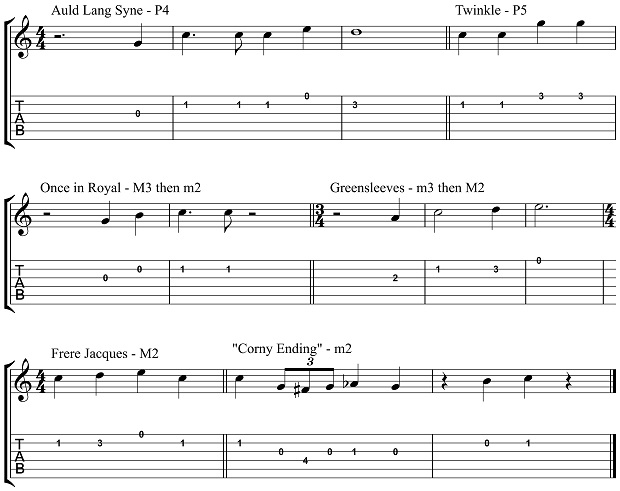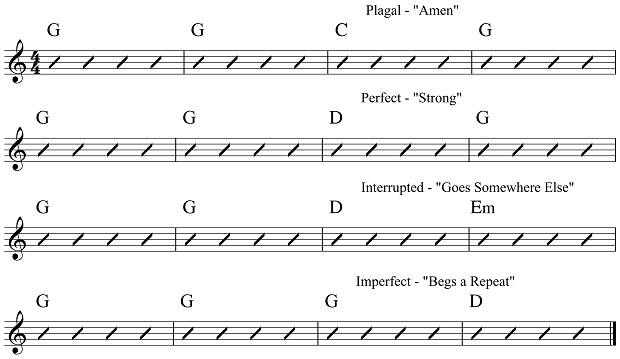By: Al Summers
Although I have been trained as a reading guitarist and notating composer, I believe that musicians at all levels wish to be able to play faultlessly by ear, replicating songs, riffs, chord sequences, tunes and musical ideas without hesitation.
Some can – having the gift we call ‘a good ear for music’. Having had my natural ear discouraged, quite early and painfully, I have no idea how good or poor it may have been when I first began studying music.
Discovering difficulties in my ear ability later on, it has been a long road to notating accurately from a sound source to paper, or being able to play instantly on the guitar a sound that my head imagines.
This is not the phenomenon of perfect pitch, but relative pitch; the ability to relate sounds compared to one another, something that isn’t magic, just the result of training, hard work and familiarity.
Since many students shy away from this type of learning aural tests in RGT guitar exam preparation are often left to the last minute, undertaken as if apart from real musical practice.
This is not a criticism of guitar tutors or tuition, merely an observation based upon my experiences as a student, tutor and teacher of guitar tutors.
Theory and technique are nothing without sound, and so it is important that we link aural perception to the whole musician.
Taking LCM classical guitar and RGT acoustic and electric aural tests as a template, here is a whistle-stop tour round a few tips to help make ear tests a fuller part of tuition, creativity and performance.
Guitar Ear Training – Rhythm
There is more to Rhythm than being a human metronome: recognizing the pulse should be about the feel of a piece, the ‘groove.’
Have students listen to the music, not just working out where to tap their feet, and it’s vital for improvisers to acquire this ability. For more formal players it’s the difference between a Bourree, a March and a Hornpipe, say.
As well, time is more than a bpm. In your guitar lessons, talk about and demonstrate different accents and encourage pupils to play the same melody with differing stresses, listening for the altered character as they do so.
You can also work on rhythm phrases and memory, since many students fall down here because they don’t feel any structure in the music itself.
If they forget half the phrase, encourage good musicianship by improvising the rest. When doing so, it’s amazing how accurate the results can be.
Guitar Ear Training – Pitch
Intervals are fundamental when it comes to teaching and learning to recognize pitches.
Try this note-at-a-time exercise: have the student play any note; they then sing (aloud or in their head) the next note they wish to hear before attempting to play it.
If they play correctly they simply keep going, adding a note at a time, but it’s over if the sounded note is wrong. If they’re good at this exercise then it becomes a memory exercise as well.
Recognizing intervals via famous tunes is also a common way to teach pitches, the first two notes of Auld Lang Syne being a rising perfect fourth for instance.
Leading and resolving qualities give character, as in the first two notes of TV’s Neighbours theme having a major sixth falling to the fifth.
A few examples using traditional songs to help teach pitch recognition are shown here.
Although some pupils feel shy about it, stress the importance of singing, feeling how notes sound.
I’m no great singer, but I demonstrate singing to my students in order to put them at ease, so that they realize it’s not the quality of their voice that is the issue.
When teaching phrase recognition, you can cut down the panic felt by some by asking them first to define the rough shape of a phrase, perhaps doing this by drawing a line, on paper or in the air.
As well isn’t it amazing, being told the scale and given a phrase, how many then try notes not in that key? Therefore teaching a knowledge of keys is essential for recognizing phrases by ear.
A sense of key gives expectations, ruling out some notes from the selection process.
Guitarists too frequently learn patterns rather than note names: encourage playing by note name and/or interval rather than being a slave to a ‘box.’
Developing a clear sense of key provides a sound foundation of musicianship.
Guitar Ear Training – Harmony
Key sense here is, er, key. Having students write their own diatonic sequences as quickly as possible is great training.
When teaching chord types, rather than suggest, try to get your pupil to describe chord quality i.e. major are ‘fluffy bunny’; sus4s are ‘Pinball’ etc. (reminders of styles, songs, artists).
They’re more likely to assimilate such evaluations. The types then ‘belong to them’ and become internalized as a sound they know, can use and can identify.
You can also teach cadences and establish the character of each one. Perfect could be ‘corny’ or ‘strong’; imperfect a turnaround; plagal ‘Amen’ or ‘soft’; interrupted ‘goes somewhere else.’ Seen as common 2-chord tricks they make more sense.
An exercise I use is to create, on paper only at first, an instant 16-bar with a different cadence at the end of each 4-bar line using the descriptions to predict how it will sound; then play it. Identify such cadences in songs your student knows and teach it to them that way, which I’ve found produces strong results.
Extensions and inversions can change the feel or soften the chord, therefore confusing the ear: encourage feeling the ‘pull’ of some chords, and focus on hearing elements of chords, especially aiming at the extension (e.g. sharp 5th in augmented, sharp 9 in the ‘Hendrix’ chord) or listening for the bass note.
These are some of the ways that I address ear training in my lesson, do you have a favorite way to teach guitar ear training to your students? Share it in the comments section below.



This is overlooked so often. We need a system to start our students to begin hearing from day one. I start with getting them to demonstrate hearing up and down. Then I get them to duplicate a pitch. If they cannot do that I have them simply sing anything. Then I ask them to go up and/or down from there. Some have difficulty with this. Anyone have any experience/luck with this for beginners?
Yeah beginner’s are tough for sure George. I like the game of “follow the leader.” Where I play a note on the guitar, then ask the student to sing it back. Then, they play a note and I sing it back. We do that for a while until it’s easy, then move on to two notes, then three etc.
I also do the same game but I play a note on the guitar and ask them to play that note back. We start with restrictions, so only out of the notes C and D, or C D and E, etc. Then expand from there.
It can be hard to do with younger or beginner students, but making it into a game helps I find.